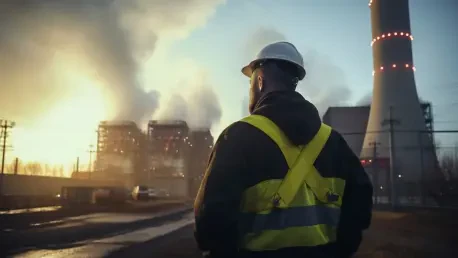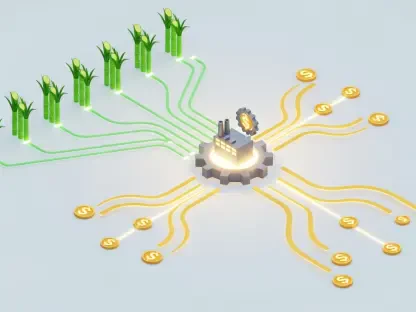A nuclear quandary has emerged against the backdrop of an ongoing geopolitical conflict, capturing the world’s attention. The Zaporizhzhia Nuclear Power Plant in Ukraine, occupied by Russian forces, holds American-supplied nuclear fuel, creating a complex diplomatic puzzle. As tensions spike, the global community focuses on whether Russia and the United States, two nuclear superpowers, can craft a resolution through mediation.
In an unexpected diplomatic engagement, Russia has called upon the International Atomic Energy Agency (IAEA) to mediate discussions with the United States concerning the U.S. nuclear fuel present at the Russian-occupied plant. This move is critical as the plant was a key asset to Ukraine’s energy infrastructure before the conflict, supplying a significant portion of the nation’s electricity. As the plant remains idle amid ongoing hostilities, the tangled politics involving nuclear fuel have heightened the stakes in this energy crisis.
An Unexpected Nuclear Dilemma
The juxtaposition of U.S. nuclear fuel being stored in a facility controlled by Russia is a rare and complex scenario. This paradox presents unique challenges, as both nations must navigate sensitive political, technical, and safety concerns. The potential pathways forward may involve intricate diplomatic maneuvering to ensure that nuclear materials are handled safely and accountably. This includes addressing intellectual property considerations and the logistics of either utilizing or returning the fuel.
International diplomacy, therefore, emerges as a crucial component in managing this precarious situation. While both Moscow and Washington have vested interests in the safe handling of nuclear materials, the potential for a larger diplomatic dialogue could set a precedent for resolving such crises in conflict zones. The role of impartial mediators like the IAEA becomes essential to balancing these high-stakes concerns with pragmatic solutions.
The Complexity of Zaporizhzhia
Zaporizhzhia’s significance to Ukraine’s energy supply cannot be overstated. Prior to the conflict, the plant contributed substantially to the national grid, serving as a linchpin in sustaining the country’s power needs. Its strategic importance has been magnified by its location at a crossroads of European energy routes, contributing to the current geopolitical tension.
The site’s capture by Russian forces more than three years ago has turned it into a focal point of broader military and political confrontations. Both Ukraine and Russia are acutely aware of the plant’s value, not only as an energy resource but also as a symbol of control. Shelling in the vicinity complicates the situation further, with each side accusing the other of endangering the plant’s stability.
Decoding the Entrenched Conflict
Nuclear fuel in this context is not only a power source but a significant lever in political negotiations. Russia’s “comprehensive plan” highlights its approach towards gradually reinstating the plant’s operations. However, military threats persist, casting a shadow over the feasibility of restarting power generation. This underlines the plant’s duality as both a civilian energy provider and a strategic military asset.
The incorporation of American nuclear elements adds layers to the complex diplomatic discussions. As these materials sit at the crossroads of international laws and territorial disputes, parties must navigate a web of security protocols and proprietary rights alongside the pressing need to mitigate military risks.
Insights from the Experts
Alexei Likhachev, an influential figure in Russia’s nuclear strategy, indicates Russia’s openness towards resolving the nuclear fuel issue either by utilizing or returning it to American hands. His position underscores Russia’s strategic goals of balancing pragmatism with sovereignty in energy domains.
Rafael Grossi, at the helm of the IAEA, offers a contrasting viewpoint, emphasizing the formidable safety concerns surrounding the plant’s resumption. Grossi’s cautious stance reflects his priority on achieving consensus on basic infrastructure security, including stable electricity and cooling water supplies, thus ensuring the plant’s safe operation against a volatile backdrop.
Navigating the Path to Resolution
The prospect of successful mediation lies within the potential frameworks that international organizations like the IAEA might establish. These frameworks would need to prioritize safety, de-escalation of military tension, and technological collaboration as critical components. Furthermore, initiating dialogue about nuclear risk management could transform into best practices for handling similar impasses in future conflict zones.
Historical precedents suggest that proactive engagement, transparent communication, and adherence to international guidelines provide foundational steps in mitigating nuclear hazards. By adopting these strategic imperatives, the world can aspire toward ensuring the safe, responsible management of nuclear materials amidst warfare.
It was clear from the unfolding events that strategic, bipartisan cooperation held the key to unraveling the nuclear conundrum at Zaporizhzhia. As the plant remained dormant, the world witnessed a collective effort to balance energy security with global peace, redefining futuristic diplomacy at the heart of nuclear mediation.









